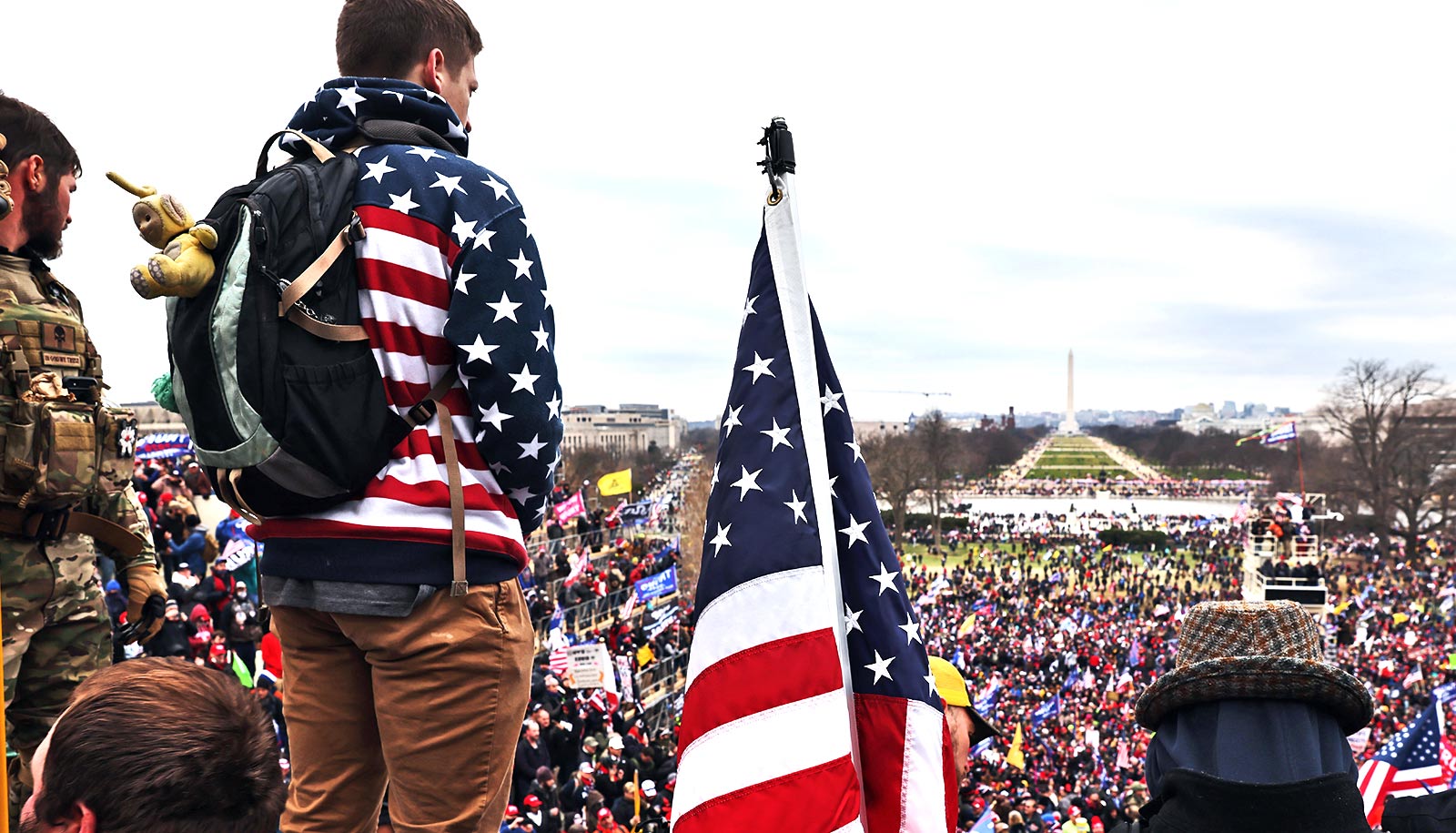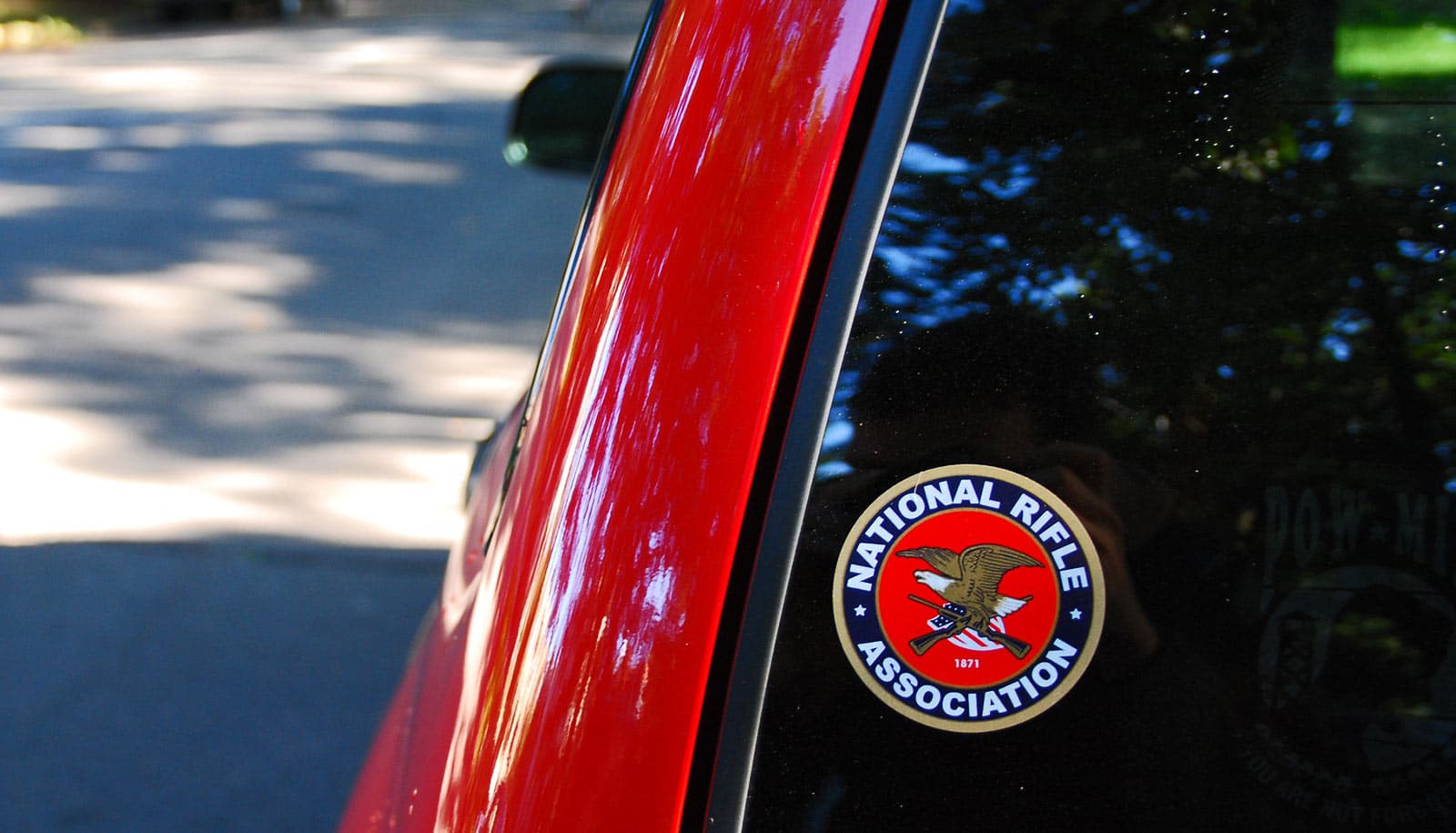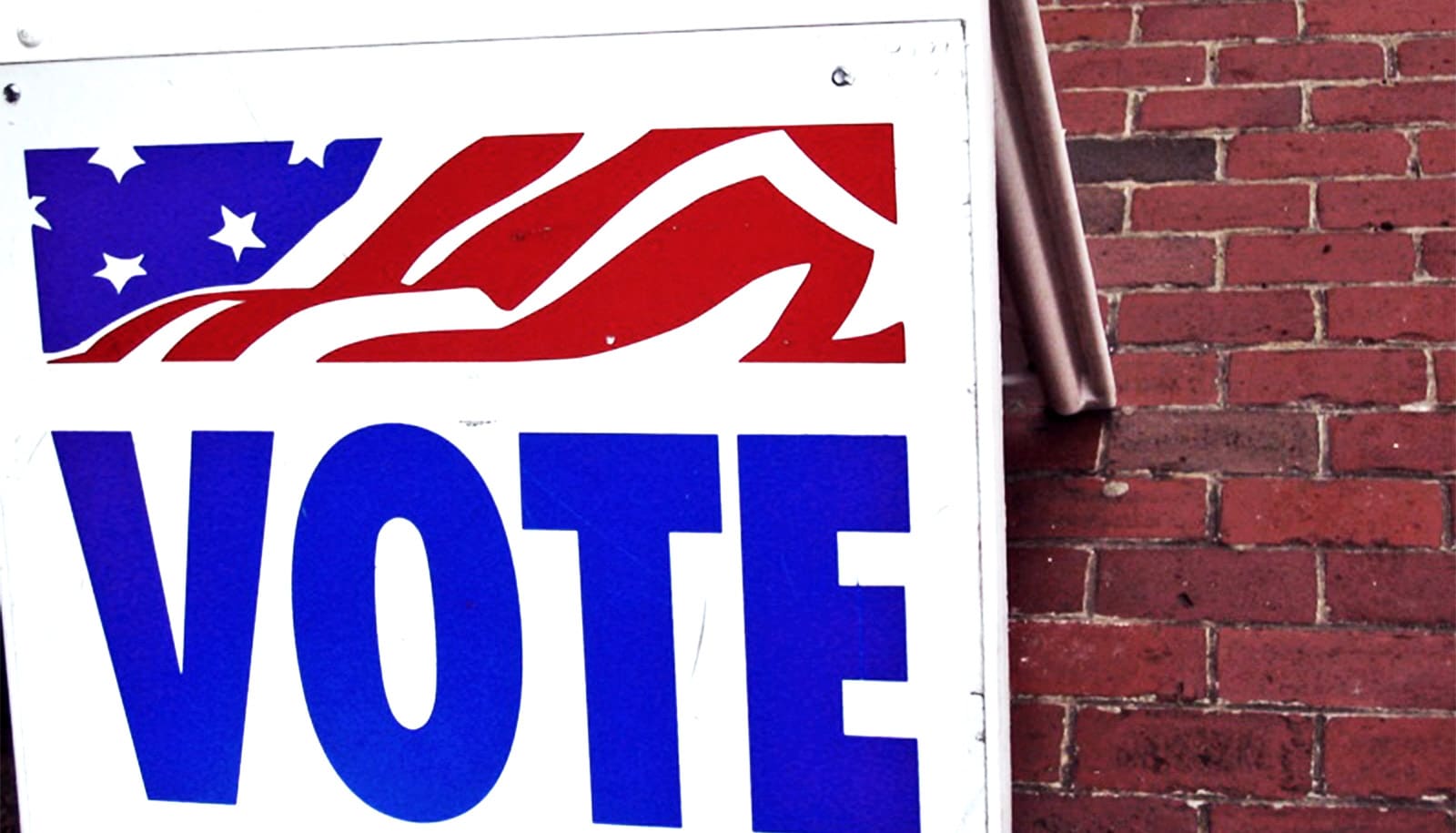Workshops that resemble couples therapy left college students less politically polarized, report researchers.
Thanks to countless recent surveys and studies, it is now a widely accepted fact that the ideological chasm between Republicans and Democrats today has grown larger than at any other time in American history, save for the post-Civil War Reconstruction era. Many believe the two parties are so bitterly divided that there’s little chance for reconciliation. But two years ago, Rob Blair, assistant professor of political science and international and public affairs at Brown University, attended a workshop that gave him hope.
The so-called Red/Blue Workshop was hosted by Braver Angels, a non-governmental organization that launched in 2016 to help Americans see each other beyond stereotypes and form community alliances. Blair says he was intrigued by the way the workshop’s facilitators guided Democrats and Republicans through exercises that encouraged introspection rather than debate, a tactic borrowed from couples therapists. Observing the exercises changed Blair’s perspective, and he wanted to know if it worked as effectively for the participants themselves.
In 2020, Blair and several other scholarly colleagues worked with Braver Angels to organize de-polarization workshops on four college campuses, and to administer one pre-workshop survey and two follow-up surveys to each workshop participant.
They found that, one week later, the students who participated in the workshop expressed 22% less direct hostility toward people in the other party, were more willing to donate money to de-polarization programs, and scored lower on a partisan implicit bias test, in which they were shown sequences of politically-related images in quick succession and asked to pair them with randomly generated words like “Republican” and “good.”
Six months later, some of the workshop’s effects had worn off, but participants still showed less implicit bias and were more willing to donate money to de-polarization initiatives than their peers in a control group that had not taken part in the workshops. Blair says that if effects of this size were extrapolated to the entire US adult population, they would be large enough to reverse roughly one third of the increase in polarization over the past three decades.
Following the release of a working paper and a policy brief detailing the findings, Blair answers questions about the study’s origins, what the results mean, and how average Americans can ease polarization in their own communities:
What prompted your collaboration with Braver Angels?
I coordinate a multi-university consortium focused on the topic of democratic erosion. We use a combination of teaching, research, civic engagement, and policy activism to understand threats to democracy in the United States and abroad. One issue that kept coming up in our work was polarization in the US—whether it’s a threat to democracy, and whether it’s a uniquely existential problem right now. At the time, my colleague Jessica Gottlieb, who works at Texas A&M University, was working with a couple of student organizations who mentioned they had been in touch with Braver Angels. We looked into their work and thought, this model is really unusual and impactful.
You characterize Braver Angels’ work as “couples therapy” for groups of people with polarized political views. What elements of couples therapy does the organization use in their de-polarization workshops?
I think one of the most important principles Braver Angels teaches is mutual vulnerability. In these workshops, there are two teams: the “reds,” or the people who identify as conservative, and the “blues,” or the people who identify as liberal. In the first exercise, the “reds” go into a room together and make a list of stereotypes they think the “blues” have about them. They list a few reasons why the stereotype is false… but they also identify the kernel of truth in the stereotype. For example, they might come up with the stereotype that lots of “blues” believe “reds” are a bunch of racists. The “reds” list several reasons why they think that’s false, but then they also discuss some ways in which they might have projected racial insensitivity and given people the impression that they’re racist. Then, the “blues” do the same exercise. They might say, okay, the “reds” think we all hate America. Here are three or four examples that show that’s not true, but here’s the kernel of truth: Sometimes we can be overly critical.
That experience of having to share the kernel of truth—having to admit the “other side” is on to something—it really creates a sense of vulnerability. To watch the other side do the same has the same effect. That opportunity to watch others be self-critical and put themselves in a vulnerable position is key. There isn’t a lot of back-and-forth conversation between the two groups. This isn’t a debate: The goal isn’t for each group to convince the other they’re right, but instead just to give each group an opportunity to show their true colors and hope their perspective is understood a bit better.
You surveyed participants immediately after each workshop and again six months later—and there’s a noticeable dip in tolerance for the “other side” at the six-month mark. How can these de-polarization exercises work in the long term?
While it’s true that the effects of the workshops did decay over time, they’re still present. Even when the students took an implicit association test, which is harder to game than a direct survey question, they were less polarized six months after the workshop than the control group, even though the difference is statistically weaker. They were also more willing to donate money to other de-polarization programs—to put their money where their mouths were. I think that’s especially noteworthy given what happened in the US over those six months: We entered into a deadly pandemic; we wrestled over how to reckon with racism and police violence; we witnessed a bitterly divisive presidential election season. That they stayed less polarized than before, even in that pressure-cooker environment, is amazing.
I do think that if the pandemic hadn’t happened directly after the workshops, we would have seen even better long-term results. Braver Angels is focused on long-term solutions. The workshops aren’t meant to be a one-stop shop where you attend one and you’re de-polarized forever. You’re encouraged to join a regional alliance where you participate in more programming that helps you engage with the “other side.” So if you’re a Democrat, you’re encouraged to attend a College Republicans meeting, and vice versa. You go with the same sense of curiosity, generosity, and desire to learn that you brought to the workshop, and that is how you sustain that open-mindedness. Because the pandemic shut down all of these meetings, none of this longer-term engagement was possible this time around. I think it’s possible that in more propitious conditions, we might have seen those less polarized views persist more—which is why we’re interested in scaling up these workshops.
If these workshops are scaled up, how do you envision this new, more politically tolerant sentiment might travel upstream to those in power, such as lawmakers and corporate leaders, and effect real change?
There’s a debate about whether polarization is being driven from the bottom up—elites taking cues from constituents—or whether it’s from the top down—elites becoming more polarized and in turn polarizing the masses. I suspect it’s a little of both: there’s a feedback loop where the causal arrow points in both directions.
But I also think that, to some extent, we the masses have been demanding polarization from our political leaders. We don’t like it when they compromise; conservatives want to “own the libs” and liberals like to see “conservative tears.” We like seeing the other side get beaten down even more than we like our side getting lifted up. So I think if we can change that sentiment—if we can convince enough Americans that they need to demand less polarization from their elected leaders—then we would see less polarized behavior in our leaders, because they do what they need to do to appease their constituents and stay in office.
How can everyday people implement techniques from Braver Angels workshops to encourage less polarization in their own communities?
I think, first of all, that people need to seek out opportunities to be exposed to real human beings on the “other side.” I don’t just mean you should watch Rachel Maddow or read an op-ed in the Wall Street Journal. I mean that you need to have in-person encounters with people you don’t agree with, in order to understand what they think, how they feel, and how they interact with one another. One of the primary reasons why we’re so polarized in this country is because we are more socially siloed than ever before. We tend to seek out schools, workplaces, and hobbies where people share our political beliefs.
I think the second step, once you do have an opportunity to engage with someone on the “other side,” is to think differently about the purpose of the conversation. Don’t go into a conversation about something contentious, like gun rights or abortion, thinking you’re going to convince the other person that your position is right. Don’t try to persuade; don’t try to find common ground. Just try to understand. Ask them, “Why is it that you believe the things you do?” And not in an aggressive, “How could you possibly believe…” sort of way, but in a genuine way: “Tell me why. I’m just curious.”
The third step is to use that conversation to extrapolate to others on the other side. It’s really easy for someone who, for example, is a Republican with only one Democrat friend to say, “This one Democrat is okay; the problem is the rest of them.” But the Braver Angels workshops have taught me that most of the time, that sentiment is probably not factually true. One thing that stands out when you attend a workshop is that there is a surprising amount of variation in views among Republicans and Democrats. Everybody deviates from party stereotypes in some way. Once you realize that, you can make a leap of logic from, “This person is okay, but the rest of them aren’t,” to, “Maybe they’re mostly all okay,” and you can help break down that false sense that the two parties are two monoliths fighting against one another.
Source: Brown University



